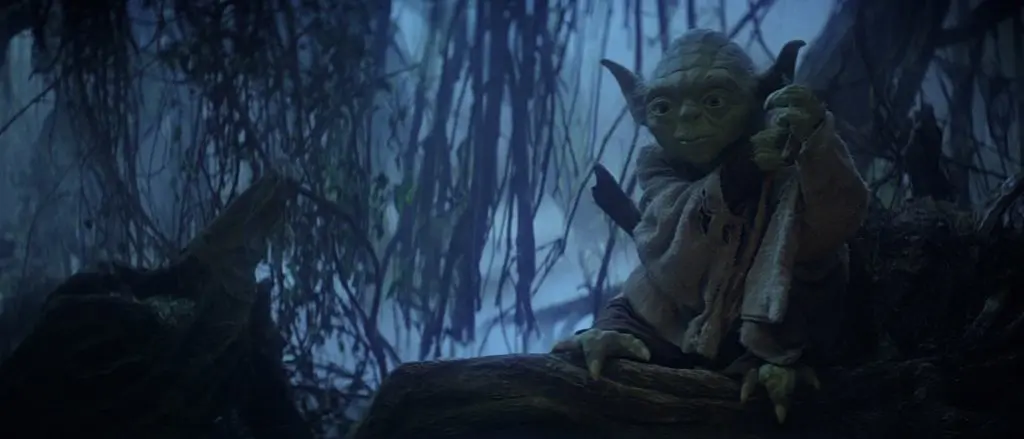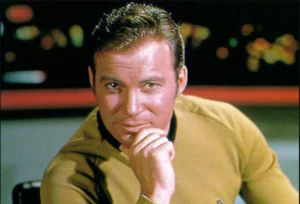
Yoda, the legendary Jedi Master from the Star Wars saga, stands as one of cinema’s most profound sources of wisdom, spiritual guidance, and philosophical insight. Through his centuries of experience and deep connection to the Force, this diminutive yet powerful character has offered timeless teachings about patience, mindfulness, the nature of fear, and the path to inner peace and enlightenment. These Yoda affirmations draw inspiration from his profound understanding of the balance between light and dark, his emphasis on the power of belief and intention, and his demonstration that true strength comes not from physical prowess but from wisdom, compassion, and spiritual mastery.
The enduring appeal of Yoda lies in his embodiment of the archetypal wise teacher whose lessons transcend the boundaries of science fiction to offer genuine guidance for personal growth and spiritual development. His unique perspective on life, death, success, and failure provides a framework for understanding challenges as opportunities for growth and for recognizing that our greatest limitations often exist within our own minds. Through his teachings, Yoda demonstrates that mastery of oneself is the foundation for mastery of any external skill or force, and that true power comes from harmony with the universe rather than domination over it.
These Yoda affirmations will help you cultivate the same inner peace, spiritual wisdom, and mindful awareness that made this character such a beloved guide and teacher:
• Embrace patience and mindfulness as foundations for all learning and growth, understanding that rushing leads to mistakes and missed opportunities for deeper understanding • Trust in the power of belief and intention, knowing that your thoughts and expectations shape your reality more than external circumstances • Face fear with courage and understanding, recognizing that fear is the path to the dark side and that confronting it with wisdom leads to liberation • Seek balance in all aspects of life, understanding that extremes in any direction lead to imbalance and suffering • Practice humility and continuous learning, remaining open to wisdom from unexpected sources and recognizing that true mastery is an ongoing journey • Cultivate inner strength through meditation and self-reflection, finding power in stillness rather than in action or reaction • Approach challenges with calm determination rather than aggressive force, understanding that gentle persistence often succeeds where violence fails • Listen to your inner wisdom and intuition, trusting the guidance that comes from deep contemplation and spiritual connection • Accept the natural cycles of life and change, finding peace in impermanence and growth through adaptation
Whether you’re facing difficult decisions, seeking spiritual growth, or simply striving to live with greater wisdom and compassion, these Yoda affirmations will remind you of the transformative power that comes from inner peace, mindful awareness, and the courage to trust in forces greater than your individual will.
25 Best Yoda Affirmations
- Like Yoda, I trust in the Force that flows through all living things, guiding me toward wisdom and right action.
- I face my fears with courage and understanding, knowing that fear leads to suffering but courage leads to growth.
- My patience and mindfulness allow me to see clearly and act wisely in all situations I encounter.
- I believe in my ability to accomplish what seems impossible, for size matters not when the spirit is strong.
- Like Yoda, I seek balance in all things, avoiding the extremes that lead to darkness and suffering.
- I learn from my failures and mistakes, understanding that they are opportunities for growth and deeper wisdom.
- My inner strength comes from stillness and meditation, not from aggression or the need to prove myself.
- I approach challenges with calm determination, knowing that gentle persistence often succeeds where force fails.
- Like Yoda, I remain humble despite my achievements, always ready to learn from others and new experiences.
- I trust my intuition and inner wisdom, listening to the guidance that comes from deep spiritual connection.
- My actions are guided by compassion and wisdom rather than by anger, fear, or the desire for revenge.
- I accept the natural cycles of life and change, finding peace in impermanence and growth in adaptation.
- Like Yoda, I understand that true mastery comes from serving others rather than seeking personal power or glory.
- I practice mindful awareness in each moment, staying present rather than dwelling on the past or fearing the future.
- My thoughts and intentions shape my reality, so I choose to focus on positive possibilities and outcomes.
- I find strength in simplicity and wisdom in understanding the fundamental truths of existence.
- Like Yoda, I know that luminous beings are we, not crude matter, and I honor the spiritual essence within myself and others.
- I approach conflicts with understanding and compassion, seeking resolution rather than victory over others.
- My training and growth continue throughout my life, for a true student never stops learning and evolving.
- I trust in the natural flow of the universe, knowing that when I align with it, all things become possible.
- Like Yoda, I understand that attachment and possessiveness lead to suffering, so I practice letting go with love.
- I cultivate inner peace through meditation and reflection, creating a calm center that cannot be disturbed by external chaos.
- My wisdom grows through experience and contemplation, not through the accumulation of knowledge alone.
- I serve the greater good rather than my own selfish desires, understanding that true fulfillment comes from helping others.
- Like Yoda, I know that death is a natural part of life, and I celebrate the eternal nature of the Force that connects all beings.
We recommend the following books for self improvement:

365 (+1) Affirmations to Supercharge Your Life
The one-of-a-kind program contained in this affirmation book, adorned with beautiful and colorful artworks, is meticulously designed to be wholeheartedly embraced by your subconscious mind, enabling you to manifest the life you desire.
Buy on Amazon
Small Habits Revolution: 10 Steps To Transforming Your Life Through The Power Of Mini Habits
If you're frustrated by failed attempts to adopt new habits, there's good news. The solution is within your grasp. This fast-moving guide provides actionable advice that will help you to make positive, purposeful, lasting changes in your life.
Buy on Amazon
Embrace What You Can’t Change
"Embrace What You Can’t Change" by the insightful duo Ahiranta Rinpoche and Ozay Rinpoche is a transformative guide that invites readers to navigate the complexities of life with grace and acceptance.
Buy on Amazon
We Can Do Better: A Self-Help Book for People Who Are Tired of Self-Help Books
We Can Do Better isn’t another book telling you to hustle harder or wake up at 5 a.m. It’s not about fixing yourself — it’s about finally giving yourself permission to stop performing and start feeling human again.
Buy on Amazon
The P.R.I.M.E.R. Goal Setting Method
Amazon bestselling author Damon Zahariades provides a clear, concise, and actionable system for accomplishing anything you set out to do. You'll learn how to approach goal setting in a way that practically guarantees success. Along the way, you'll experience a massive boost in self-confidence. After achieving goal after goal, you'll begin to anticipate success as a foregone conclusion.
Buy on AmazonThis post contains affiliate links. As an Amazon Associate, we earn from qualifying purchases at no additional cost to you.
Yoda: Inspirational Quotes
The profound wisdom of Yoda resonates throughout the Star Wars saga, offering timeless insights into the nature of consciousness, the power of belief, and the path to spiritual enlightenment. These carefully selected quotes capture the essence of his teachings about the Force, the dangers of fear and anger, and the importance of mindfulness and patience in all endeavors. Each quote reflects his deep understanding of the spiritual principles that govern both individual growth and the cosmic balance between light and dark forces.
- “Do or do not, there is no try.”
- “Fear is the path to the dark side. Fear leads to anger, anger leads to hate, hate leads to suffering.”
- “Size matters not. Look at me. Judge me by my size, do you?”
- “That is why you fail.”
- “A Jedi’s strength flows from the Force.”
- “You must unlearn what you have learned.”
- “Control, control, you must learn control!”
- “Patience! For the Jedi it is time to eat as well.”
- “Adventure. Excitement. A Jedi craves not these things.”
- “Luminous beings are we, not this crude matter.”
- “Wars not make one great.”
- “Difficult to see. Always in motion is the future.”
- “Death is a natural part of life. Rejoice for those around you who transform into the Force.”
- “Train yourself to let go of everything you fear to lose.”
- “In a dark place we find ourselves, and a little more knowledge lights our way.”
- “Truly wonderful, the mind of a child is.”
- “Strong you have become, young Skywalker, but not that strong.”
- “When nine hundred years old you reach, look as good you will not.”
- “Hmm. Lost a planet, Master Obi-Wan has. How embarrassing.”
- “Much to learn, you still have.”
- “Always pass on what you have learned.”
- “Clear your mind must be, if you are to discover the real villains behind this plot.”
- “Strong am I with the Force, but not that strong.”
- “Powerful you have become, the dark side I sense in you.”
- “May the Force be with you.”
History of Yoda
Yoda emerged from George Lucas’s imagination as a central figure in the Star Wars universe, first appearing in “The Empire Strikes Back” (1980) as Luke Skywalker’s mysterious and powerful Jedi Master. Created during the late 1970s as part of Lucas’s expansion of the Star Wars mythology, Yoda was conceived as the embodiment of ancient wisdom and spiritual mastery, representing the pinnacle of Jedi achievement and understanding of the Force. His character was designed to challenge both Luke Skywalker and audiences’ preconceptions about power, strength, and what it means to be a true master.
The character’s development reflects Lucas’s interest in Eastern philosophy, particularly Buddhism and Taoism, which influenced many aspects of Jedi philosophy and the concept of the Force. Yoda represents the archetype of the enlightened teacher who has transcended ego and attachment, achieving a state of harmony with the cosmic forces that govern the universe. His small stature and advanced age were deliberate choices meant to emphasize that true power comes from wisdom and spiritual development rather than physical strength or youthful vigor.
Yoda’s backstory, revealed gradually throughout the expanded Star Wars universe, establishes him as one of the most ancient and powerful Jedi Masters in galactic history. At nearly 900 years old during the original trilogy, he has witnessed the rise and fall of civilizations, trained countless Jedi, and served on the Jedi Council during both the height of the Jedi Order and its near-destruction during the Great Purge. His species remains deliberately mysterious, with his homeworld and the nature of his people left largely unexplored to maintain his enigmatic quality.
The character’s role in the Star Wars saga extends beyond that of a simple mentor figure. In the prequel trilogy, Yoda is revealed as the Grand Master of the Jedi Council, wielding political influence and making crucial decisions that shape galactic history. His character arc includes both triumph and tragedy, as he fails to prevent the fall of the Republic and the rise of the Empire, leading to his exile on the swamp planet Dagobah where Luke eventually finds him.
Yoda’s teaching methods reflect his understanding that true learning comes through experience and self-discovery rather than mere instruction. His cryptic manner of speaking, his tendency to test students through seemingly simple tasks, and his emphasis on unlearning preconceived notions all demonstrate his belief that wisdom cannot be simply transmitted but must be earned through personal growth and spiritual development.
Throughout his appearances in the Star Wars films and expanded universe, Yoda serves as a bridge between the mystical and practical aspects of the Force, demonstrating that spiritual mastery has real-world applications while maintaining that the pursuit of power for its own sake leads inevitably to corruption and downfall. His character embodies the central themes of the Star Wars saga: the importance of hope, the power of good to triumph over evil, and the idea that anyone, regardless of their origins or limitations, can achieve greatness through dedication and wisdom.
Who and When Made Yoda
Yoda was created by George Lucas during the development of “The Empire Strikes Back” in the late 1970s, with the character concept originating from Lucas’s vision of an ancient Jedi Master who would serve as Luke Skywalker’s teacher. Born in Modesto, California, in 1944, Lucas drew inspiration from various sources including his interest in Eastern philosophy, Akira Kurosawa films, and classical mythology to create a character who would embody the wisdom of ages while maintaining an approachable and somewhat playful personality.
The physical design and puppeteering of Yoda were brought to life by Stuart Freeborn, the British makeup artist and special effects designer who had previously worked on films like “2001: A Space Odyssey.” Freeborn collaborated with Lucas to create Yoda’s distinctive appearance, drawing inspiration from his own facial features as well as those of Albert Einstein to create a character who would appear both ancient and wise. The character’s diminutive size and wrinkled features were carefully designed to suggest great age while maintaining an expressive face capable of conveying complex emotions.
Frank Oz, the renowned puppeteer and voice actor known for his work with Jim Henson on The Muppets, was chosen to bring Yoda to life both physically and vocally. Oz’s background in puppeteering made him uniquely qualified to handle the complex puppet mechanisms required to make Yoda appear alive and expressive. His distinctive vocal interpretation, characterized by Yoda’s unique syntax and cadence, became one of the most recognizable voices in cinema history.
“The Empire Strikes Back” was released by 20th Century Fox in May 1980, introducing Yoda to audiences worldwide and establishing him as an instant cultural icon. The character’s popularity led to his continued presence throughout the Star Wars saga, appearing in subsequent films including “Return of the Jedi” (1983), the prequel trilogy (1999-2005), and various animated series and expanded universe materials.
The intellectual property surrounding Yoda has expanded significantly since his creation, with the character appearing in countless forms of Star Wars merchandise, video games, books, comics, and other media. Lucasfilm, founded by George Lucas, maintained control over the character until the company’s sale to The Walt Disney Company in 2012, after which Disney has continued to develop and expand Yoda’s presence in new Star Wars content.
Yoda’s cultural impact extends far beyond the Star Wars franchise, with his distinctive speech patterns, philosophical teachings, and memorable quotes becoming part of popular culture worldwide. The character has been referenced and parodied in countless television shows, films, books, and internet memes, demonstrating his lasting influence on global popular culture.
The technological innovations required to bring Yoda to life as a convincing character contributed to advances in puppeteering and special effects that influenced subsequent film productions. Frank Oz’s performance set new standards for what could be achieved with puppet characters in serious dramatic contexts, paving the way for later characters created through similar techniques.
Yoda has also had significant influence on discussions of spirituality and philosophy in popular culture, with his teachings about fear, anger, patience, and the nature of consciousness being cited in academic discussions, self-help literature, and spiritual guidance contexts. His character has introduced millions of people to concepts from Eastern philosophy and has been credited with making complex spiritual ideas accessible to mainstream audiences.
The character continues to appear in new Star Wars content, including recent series like “The Mandalorian” and its spin-offs, where digital recreation technology has allowed filmmakers to present Yoda in new contexts while maintaining the integrity of Frank Oz’s original performance. This technological evolution demonstrates the enduring appeal of the character and the continued desire of audiences to experience his wisdom and guidance.
Academic analysis of Yoda has positioned him as a significant figure in the study of mentorship, wisdom literature, and the representation of spiritual teachers in popular media, ensuring his continued relevance in scholarly discussions about mythology, philosophy, and the power of storytelling to convey profound truths about human experience.
Why We Love Yoda
Our enduring love for Yoda stems from his embodiment of wisdom without arrogance, power without corruption, and age without bitterness—qualities that make him the ideal spiritual teacher and mentor figure. He represents the possibility that someone can achieve ultimate mastery while maintaining humility, playfulness, and genuine care for others. His small stature combined with immense spiritual power challenges our assumptions about strength and demonstrates that true greatness comes from inner development rather than external achievements.
Yoda appeals to audiences because he validates the importance of patience, mindfulness, and continuous learning in a world that often rewards haste, aggression, and overconfidence. His teachings about fear, attachment, and the nature of failure provide practical wisdom for navigating life’s challenges while maintaining inner peace and moral clarity. He shows us that wisdom is not about having all the answers but about understanding the right questions to ask and the patience to wait for understanding to emerge.
Perhaps most importantly, Yoda represents the hope that no matter how dark things become, wisdom and goodness can prevail through persistent dedication to higher principles. His character demonstrates that true teachers don’t just impart knowledge but inspire students to discover their own potential and find their own path to enlightenment. He reminds us that the greatest victories are often won not through force but through understanding, compassion, and the courage to do what is right even when it is difficult.
His lasting popularity reflects our deep need for wise guides who can help us navigate complex moral and spiritual questions while maintaining hope that growth and transformation are always possible.
Interesting Facts about Yoda
- Age: Yoda is approximately 900 years old when he dies in “Return of the Jedi,” making him one of the oldest characters in the Star Wars universe.
- Frank Oz Voice: Yoda is voiced by Frank Oz, who based the character’s distinctive speech pattern partly on his own syntax experiments and various linguistic influences.
- Species Mystery: Yoda’s species has never been officially named or fully explained, maintaining the character’s mysterious origins.
- Stuart Freeborn Design: Yoda’s physical appearance was designed by Stuart Freeborn, who incorporated elements of his own face and Albert Einstein’s features.
- Puppet Innovation: The original Yoda was an advanced puppet requiring multiple operators to achieve realistic movement and expressions.
- Unique Syntax: Yoda’s distinctive speech pattern follows an Object-Subject-Verb structure, different from standard English syntax.
- Lightsaber Color: Yoda wields a green lightsaber, which he uses in dramatic duels during the prequel trilogy despite his advanced age.
- Dagobah Exile: Yoda lives in exile on the swamp planet Dagobah for approximately 20 years between the prequel and original trilogies.
- Force Ghost: Yoda appears as a Force ghost in later films, demonstrating the Jedi ability to maintain consciousness after death.
- Jedi Council: As Grand Master of the Jedi Council, Yoda was one of the most powerful and respected Jedi in galactic history.
- Training Legacy: Yoda trained Jedi for over 800 years, including Count Dooku, Qui-Gon Jinn, and eventually Luke Skywalker.
- CGI Evolution: Later films used CGI to create Yoda for action sequences, though Frank Oz continued to provide the voice.
- Cultural Impact: Yoda’s quotes, particularly “Do or do not, there is no try,” have become widely recognized philosophical statements.
- Meme Status: Yoda has become a popular internet meme, with his distinctive speech pattern frequently parodied and referenced.
- Merchandising Success: Yoda has been one of the most successful Star Wars characters in terms of merchandise sales and cultural recognition worldwide.








